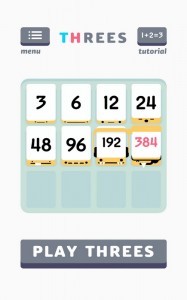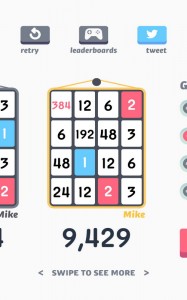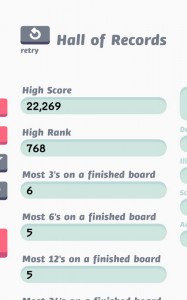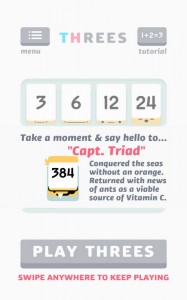Here’s a confession: I am addicted to Threes! I play it on my daily commute, while at work, at school, during dinner, even at inappropriate situations where pulling out your phone would be considered rude. Let me start at the beginning.
Puzzle games are a dime a dozen. Sliding blocks, room escapes, and matching gems are quite the norm in this genre and while they are generally fun and addicting, puzzle games rarely make a blip on the radar in the sea of action games and various casual/social games. However, as mentioned above, one particular puzzle game deserves your attention: After debuting in iOS a healthy few months before Android, Threes! by Sirvo LLC have finally landed in the Play Store.
Nothing Beats The Original
Let’s address the elephant in the room: Threes! debut has been met with some controversy. Like most mobile games, Threes! has been rife with clones and blatant rip-offs. Capitalizing on the demand for this puzzle game, and the fact that Threes! was still unreleased for Android, developers have scrambled to emulate the same mechanics and gameplay. Just search for ‘2048’ on the Play Store and see the dozen of tiled number based games on the market, it’s so rampant the original game have been completely overshadowed in the media. Simply put, Threes! has become the Flappy Bird of puzzle games.
Slide to the Left, Slide to the Right…
Here’s the basis for Threes! (and for the most part, most of its ensuing clones as well): On a 4×4 tiled grid, gamers are tasked with sliding and adding similar numbers to score the highest number as possible without being overcrowded. There are blue (numbered 1) and red tiles (numbered 2) that can be combined to form the number ‘3’, which in turn can be combined with another ‘3’ to form a ‘6’ which also can be further combined with another and another to rack up the highest number possible. There are restrictions placed, such as being unable to combine just any number, and each move made by the players drops a random tile on the grid. Sliding numbers left right or up also slides other connecting blocks in the same directions. It makes the game much more dynamic and adds a layer of strategy, but patient and methodical players can predict (save, the random tile drops) much of their next few moves.
Reviewing Threes! and spurred by the developers response to its clones, I’ve taken a gander at similarly styled ‘2048’ games. While the core mechanics stay intact in the other games, Threes! is still much superior in every way. Most games adds an ‘undo’ button that makes the game and achieving the coveted ‘2048’ much much easier, to the pint that I find myself hitting larger number much quicker and easier. ‘Cornering’ (stacking large numbers in any four corners) high numbers are also much easier in those games as ALL tiles moves in the desired location. This doesn’t mean Threes! is overly difficult per se, but its nature conjures more demanding strategic movements from its players, and makes beating your high score much more satisfying.
Hello There!
Also one defining nature that Threes! have over its competitors is its presentation. It’s adorable and in a way that no other game has yet to successfully emulate. Sure, it’s an over-praise considering that it’s a puzzle game, but the developers give each individual numbers a personality, in a form of avatar each with their own quirks and bio, that players can’t be helped but feel charmed. It doesn’t add anything to the gameplay, but makes the game inviting.
Reviewing Threes! has been one of the few games, admittedly, I’ve been addicted to. Its simple pick to play, and a lifetime to master mechanic coupled with a charming presentation makes Threes! a class of its own. If you enjoy puzzle games or just games in general, you owe it to yourself to pick this gem up.



























